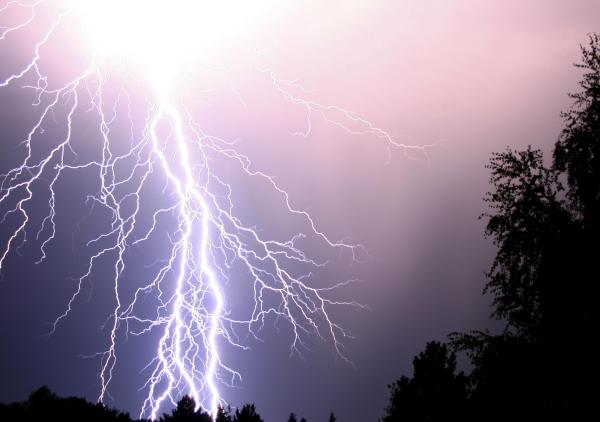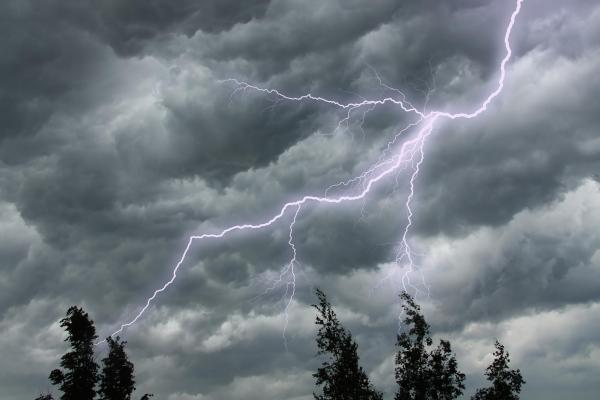
Ancient civilizations didn't have the scientific advancements we currently use to monitor meteorological phenomena. Although there is much we still have to learn, we have been better able to understand why certain natural events occur. Without this understanding, many civilizations created magical, mystical or even religious explanations for all kinds of weather. This is the case with the atmospheric phenomenon known as Saint Elmo's fire. It was witnessed by sailors who saw a glow or phosphorescence on the mast of their ships and attributed it to something not from this world.
To understand why these sailors thought this way, thedailyECO looks at the St. Elmo's fire weather phenomenon. We provide a definition and explanation of this brilliance so you can understand why it was so striking, it was believed to be holy.
What is Saint Elmo's fire?
If you are a child of the 80s, St. Elmo's Fire is a Joel Schumacher film which was a prime example of the Brat Pack genre. You may even know it from the accompanying song by John Parr. For sailors, meteorologists, and those who know a little about nautical weather patterns, the St. Elmo's fire is a weather phenomenon that is a visible manifestation of electricity in the atmosphere (electrometeor).
We explain the St. Elmo's fire weather phenomenon with the following characteristics:
- Electrical discharges: these can be continuous, they do not move and are generally of light to moderate intensity. This is in contrast to lightning which has fast, discontinuous discharges with high intensities.
- Shaped like feathers or bows: they often take these forms and have bluish, purple, and even green colorations, making them clearly visible at night.
- Discharges are emitted by objects located in elevated and/or pointed positions: such as lightning rods, ship masts, anemometers, bell towers, chimneys, and even the tips of animal horns.
- Can also be observed in aircraft during flight: usually in places such as the propellers or the tips of the wings.
- Can be accompanied by sounds: such as hissing or buzzing.
- Associated with intense electric fields: such as electrical storms, heavy snowfalls, strong winds, and also when planes fly in areas with volcanic ash.
- Compasses are altered: as an electrometeor, the presence of St. Elmo's fire causes compasses to malfunction and become unreliable.
Taking these characteristics into consideration, we can provide the following definition of St. Elmo's fire:
A weather phenomenon where luminous electrical energy becomes visible at the tip of a rod-type object, commonly occurring on the masts of ships.
It is also known as Witchfire or Witch's Fire. To better understand the St. Elmo's fire weather phenomenon, we look at how it works in the sections below.
Origin of Saint Elmo's fire name
It shouldn't surprise us that previous civilizations have bestowed supernatural qualities onto the phenomenon we know as St. Elmo's fire. When witnessed in nature, it is a mysterious and relatively rare incidence. Although its meteorological effects can be explained rationally, it can provide an eerie or exciting sensation. We find out some of the origins of these perceptions.
In ancient Greece, the apparitions of Saint Elmo's fire were considered to be stars. If only one star appeared, it was called Helen (a name meaning light that shines in the dark). When two appeared, they were called Pollux and Castor, referring to the names of two twin heroes from Greek myth.
The reason St. Elmo bears the name of this weather phenomenon has a somewhat confusing origin, since the Italians know him as St. Erasmus of Formia. However, many different societies over the years have attributed it to various saints. Generally speaking, sailors did not fear this phenomenon. When it appeared, they saw it as a sign that the saint would protect them from electrical storms and any challenges presented. For these seafarers, St. Elmo's fire was more than just a scientific curiosity; it was a beacon of hope in turbulent seas.
You may wonder how this meteorological phenomenon was first understood by science. Known for his scientific discoveries as much as he was for being a statesman, it was Benjamin Franklin who first suggested the true nature of St. Elmo's fire. With his observations, he was able to determine that electric charges gather around pointed objects. His groundbreaking work laid the foundation for future explorations into electrical phenomena.
How St. Elmo's fire occurs
Although it is a slight oversimplification, we can say Saint Elmo's fire can be observed if the electric field close to the surface of certain objects becomes intense. This is because its origin is the static electricity found in the atmosphere. We detail how this atmospheric phenomenon originates and what it entails:
- There is a large accumulation of electrical charges: this causes a luminous halo to be emitted, also known as the corona effect.
- The surrounding air is ionized: as a consequence, the air changes from being a gas to becoming a relatively low-density, low-temperature electroluminescent plasma.
- The plasma begins to turn blue: this color is due to the oxygen and nitrogen contained in the atmosphere.
- Approximately between 1,000 and 30,000 volts are needed: this electrical voltage is for every centimeter, required for St. Elmo's fire to take place.
- Pointed or sharp objects require less voltage: the electric field is more intense in those areas with greater curvature, which accumulate a greater amount of electrical charge.
- An alteration can be observed in compasses: since electricity and magnetism are related.
In some cases, the presence of atmospheric conditions such as high humidity or impending thunderstorms can enhance the visibility of St. Elmo's fire. This phenomenon offers a fascinating glimpse into the complex interplay of natural forces that shape our weather systems.

Is Saint Elmo's fire dangerous?
Charles Darwin described St. Elmo's fire as a fire that could not burn. As we said in the previous section, St. Elmo's Fire is a plasma with relatively low temperatures. It is difficult for it to cause fires and it is not, in principle, a phenomenon that involves much danger.
Since ancient times, there is little evidence of fires occurring on ships due to this phenomenon. We can also say the same about current aircraft. This is partly due to the design of modern planes which cause the electrical charge to be dispersed.
The same cannot be said about old airships or zeppelins. This is because highly flammable hydrogen gas was used to provide lift. It appears that it was the St. Elmo's fire weather phenomenon that was responsible for burning the German airship Hindenburg on May 6, 1937, as it attempted to land in New Jersey. 36 of its 97 occupants died in an airship that in a few seconds became a ball of fire. This tragic event underscored the potential dangers when St. Elmo's fire interacts with volatile substances.
Although this accident marked the end of the career of commercial airships, some can now be found with alternative gases. This includes helium, a gas that is not flammable, although it is slightly heavier than hydrogen. The switch to safer gases demonstrates the ongoing efforts to harness the benefits of airship travel while mitigating risks.
If you want to read similar articles to St. Elmo's Fire Weather Phenomenon - Definition, we recommend you visit our Facts about nature category.